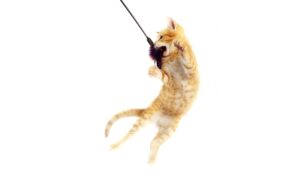Food for Thought: What Contributes to a Pet’s Healthy Diet
Glenn Polyn //March 1, 2021//
In Pet Age’s 2020 What’s New at Global supplement, Dr. Shawn Messonnier – a renowned veterinary physician, expert and author of numerous books, including the “Natural Health Bible for Dogs & Cats” – recalled his experiences with his clients, ultimately explaining that pet parents are concerned about what constitutes the most nutritious diet and what it takes for them to provide their companion animal with the best food they can afford. He admitted that, from the perspective of the consumer, the pet industry remains shrouded in mystery when it pertains to what’s inside a pet food bag and how the product is created.
“For pet parents, a big leap of faith is required because, unlike fresh human food, you can’t visually verify the ingredients used, their sources, freshness or the safeness of their handling,” Dr. Messonnier stated. “Label language can be difficult to discern, too, so people rely mostly on the observations and opinions of friends and family they trust. Inevitably, people hope what goes into the bowl will translate into well-being and happiness for their dog and cat.”
That’s not to say that consumers don’t want to know everything there is to know about how their pet’s food is made. The term “transparency” has caught fire in the past few years, as surveys from Open Farm, Luminer Converting Group and other companies regularly report that more than 90 percent of pet owners read the ingredients list when purchasing new pet food, with a similar percentage finding it important that the ingredients are ethically sourced.
Why are transparency and traceability of pet food ingredients so important to consumers?
According to Johnni Rodgers, CEO of Wet Noses Natural Dog Treat Company, consumers have become more educated and aware of what they put into their own bodies, so it’s only natural that they have become interested in taking that awareness into the area of their pet’s nutrition and well-being.
“Pet parents want to be able to read a dog food label and know exactly what they are feeding their furry family members, just as they do for themselves,” Rodgers explained. “They’re increasingly seeking out pet foods that feature limited and recognizable ingredients that are sustainably sourced. Combined with these other better-for-you claims, human-grade dog food and treats have become an emerging factor when deciding what to feed our pets. To be able to claim human grade, products are processed, inspected and have passed manufacturing regulations that are designed to assure safety for consumption by humans. Thus, by choosing human-grade food and treats, pet parents are able to confidently eliminate byproducts and processing standards that historically have been acceptable for animals, but not for humans. We encourage pet parents to read labels and choose human-grade options for their pets when possible. Because, if you wouldn’t eat it, why feed it to your dog?”
Diamond Pet Foods, a family-owned pet food company that started in 1970, has a strong relationship with trusted suppliers ensure it only sources ingredients of exceptional quality. The brand’s recipes have been developed using a proprietary formulation technology and a team of experts and scientists incorporating the latest research from many disciplines: veterinary medicine, pet food nutrition, food microbiology, as well as food production and food science. Melissa Brookshire, consultant veterinarian at Diamond Pet Foods, agrees with Rodgers.
As many humans are focused on superfoods and probiotics for their own diets, we are seeing pet owners take more interest in how these highly nutritious ingredients can help their dogs and cats live longer, healthier lives,” Brookshire said. “Our Diamond Naturals dry and select canned formulas include a variety of superfoods. Every Diamond, Diamond Naturals, Diamond Naturals-Grain Free, Diamond Pro89 formula and Taste of the Wild dry recipe also contains K9 Strain Probiotics. Every Diamond and Diamond Naturals dry cat formula as well as the Diamond CARE Weight Management Formula for Adult Cats and Taste of the Wild dry recipes are enhanced with Viables Probiotics.”
Two brands that are trusted by consumers and admired by retailers are Fromm and Nature’s Logic. In Pet Age’s 2020 Dog Guide, they were mentioned as top sellers by Nancy Bleznak, owner of Medfore Pet Supplies in Medford, New Jersey, and Garden of the Paws owner Blake Gipson in Centennial, Colorado.
“I have a lot of people buying a lot of Fromm dog cans,” Bleznak explained in November 2020. “They have 34 different varieties of canned dog food, and their presence is so big that, as a customer, you’re just drawn to their product.”
Bleznak’s customers are just as excited over Fromm’s new packaging design for Fromm Gold cat recipes.
“The packaging is absolutely beautiful, and I’m selling a lot of it,” Bleznak said. “Consumers are initally attracted to the packaging, then they stick with it after they see how well their cats perform on it.”
“What sells Nature’s Logic is the protein sources,” Gipson noted in the Dog Guide. “They have nine proteins to choose from, and we recommend to our customers that they rotate those proteins, because each protein has its own unique nutrients that benefit the dog.”
In the small animal sector, owners of small herbivores are seeking to mimic their companion animal’s natural food source. And while hay is important to a small herbivore’s diet, it’s also beneficial for small omnivores like hamsters, gerbils, rats and mice as it can provide enrichment as a nesting material.
Grass hay varieties, including meadow hay, orchard hay and timothy hay, are widely considered the healthiest options for most small herbivores. Alfalfa can be added to pet food for an additional source of fiber, amino acids and vitamins.
As for small animal pelleted food, Supreme Petfoods works with a network of experts in veterinary medicine and nutritionists, which enables the brand to be up to date on the latest scientific findings regarding an optimal diet for small herbivores and omnivores. This contributes to the formulation of recipes, which use only the finest natural ingredients.
“The science is important to us and a real driver for our product development,” said Claire Hamblion, marketing manager for Supreme Petfoods. “What we don’t put in, such as ensuring sugar is not added in the form of syrups or molasses and ensuring no meat can ever contaminate a herbivore diet, is as important as what we do put in. We select only the best quality ingredients, use fixed formulas and ensure total traceability. It’s about working to a high standard.
“Our biggest watchword is trust,” she continued. “We understand that pet parents need to trust us to work with integrity and to put the needs of their pets first. That also means being aware of our obligations to the planet and the local communities we work alongside.”
That dedication includes Supreme Petfoods not using palm oil in its products.
Today, almost all palm oil is produced in, and exported from, Indonesia and Malaysia, where rain forests are being destroyed to make oil palm plantations. That means that a variety of animals, including orangutans, are being killed in the deforestation process.
With over 50 years of experience serving consumers and their pets and more than 20 years’ expertise serving retail partners and their customers’ needs, Red Collar Pet Foods is a company that knows the ins and outs of the pet food industry. Agreeing that consumer education has been growing, Mike Thatcher, director of product development at Red Collar Pet Foods, feels that transparency and simplicity are key drivers of pet food nutrition labeling.
“With the proliferation of the Internet, consumers have become more educated when it comes to pet food nutrition and claims,” he explained. “There are more outlets – blogs, YouTube, investigative journalists, industry bodies – that are putting out pet nutrition content. With this access and education, more consumers are seeing through cheap claims and flowery language.
“For example, the dinner-with-flavor claim. To say ‘beef dinner,’ the product must contain at least 25 percent beef. For ‘with beef,’ the minimum is 3 percent beef. Labels noting ‘beef flavor’ require just enough beef suffi cient to depart a detectable flavor, which can be an extremely low amount. Today’s consumer understands this spectrum, and while more informative, claims may carry less weight in how a consumer views a brand overall.”
In response to consumer skepticism, more brands are moving away from fl owery claims and tricky wording. They are simplifying and being more transparent with simple recipes.
Many brands are now showing images of ingredients and are providing descriptions of what they are and why they are used. Some are even citing the source of ingredients, providing the region or state.
Amber Cordero and Jacqueline Taylor, the co-founders of Th e New Zealand Natural Pet Food Co., are among the group of business owners who believe in showcasing the fresh ingredients on their packaging. In 2016, the duo started the brand out of a desire to give pet parents a convenient, natural and complete raw diet to feed their pets.
All recipes are made in New Zealand using ethically sourced ingredients, grown and raised by fair trade farms. Produced in small batches, combining both the nutrition and the taste of fresh, raw food. A gentle freeze-drying process is used, which protects the natural enzymes; nothing is cooked out. Both WOOF and MEOW offer seven unique raw, freeze-dried recipes that benefit a pet’s well-being.
“Much of the pet food out there is the equivalent of junk food for animals,” Cordero noted. “You wouldn’t subject your family to a constant diet of junk, so it is time to think again about what ingredients are in those foods and what your pet has evolved to eat in the first place.”
“We want our animals to not just live and survive, but to thrive,” Taylor said. “Our natural premium pet food range uses fresh whole ingredients, brimming with earth-grown goodness which your animal’s body will recognize to heal and nourish itself, just as nature intended.”
Solutions-based pet foods, or those specialized diets that deliver nutrition with a purpose, have taken hold of consumers. SquarePet Nutrition recently introduced a line of premium, solutions-based diet options made with only the highest quality and responsibly sourced ingredients.
“As we all know pet parents are becoming increasingly more sophisticated and nutritionally savvy when it comes to their pets nutrition. said Dr. Travis Atkins, DVM, Chief Science Officer of SquarePet.
“This is a great thing but many of these well-informed pet parents are left with having to compromise when it comes to finding a solutions based or functional nutritional diet option inside a typical retail environment. Instead of settling for a diet that may fit a few of the nutritional parameters they are seeking our VFS (Veterinarian Formulated Solutions) diets are directed straight at the most common needs a pet owner may be looking to support.”
The VFS line has been designed and created by SquarePet’s team of veterinary professionals including a board-certified veterinary nutritionist and PhD animal nutritionists to provide premium and all-natural solutions-based diet options that help support a dog’s individual needs. VFS offers premium solutions-based nutritional options that support the needs of individual dogs, including those with needs related to joint health, food allergies, digestive health and other dietary issues.
NutriSource Pet Foods, part of KLN Family Brands, is a pet food manufacturer committed to providing healthy food ingredients for all its recipes. At the core of each formula is its proprietary Good 4 Life System, which is designed to support proper absorption of the nutrients that defend against infection and disease. The brand’s diets support sensitive skin and stomachs, heart health and nutrition for both young and old pets. Wholesome grains, grain-free, large breed, small breed, super performance and weight management formulas are just some of the wet and dry recipes offered by NutriSource.
“Dogs are meat-eaters,” said Chase Rasmussen, vice president of NutriSource. “They love protein, whether it be from fish, fowl or hooved animals. Research is showing us that high-protein diets can be very beneficial to our pets by providing lean muscle mass, reducing allergies and even helping prevent some cancers. We’ve also seen evidence that dogs that eat more protein have more energy, smaller waste and better breath.”
According to Thatcher at Red Collar Pet Foods, another trend in pet food involves more natural sources of colors and spices. Natural fruit extracts and concentrates have been in the human market for decades. And the use of fruits and vegetables will become more mainstream in pet food production as another example of the humanization trend in pet foods.
“Many fruits and veggies – and pulps derived from them – are instrumental in the hands of a good formulator,” he said. “Ingredients like beet pulp and tomato pomace are good balances of different fibers and can help balance GI health. A vast number of other fruit/veggie-based ingredients – pumpkin, berries, apples – can be used as targeted fiber ingredients depending on the needs of the diet, while at the same time giving a cleaner more understandable label.”
He added that fruits and veggies also are being used for visual inclusions in pet food. Small flakes of spinach incorporated into the product will go much further than an image on the pack. Dried fruits and veggies reinforce what is claimed on pack.
“Sustainability” is another term that has been catching on with consumers, and many predict it will make a big move forward in the pet care industry as pet owners use sustainable packaging as a motivator for their purchases.
“As pet parents are becoming more conscious of the state of our planet, they have become more passionate about supporting brands that care about this issue,” Adrian Pettyan, CEO and co-founder of Caru Pet Food Company. “Eco-friendly packaging has always been a top priority for us since we first launched our pet stews in 2014. We were the first pet food company to utilize Tetra Pak cartons for all of our dog and cat stews because they keep our recipes fresh, are easy to serve and are made from up to 70 percent post-consumer recycled paper.”
Nature’s Logic recently become the first pet food company to join the American Sustainable Business Council (ASBC), a leading business organization advancing the power of business for a just and sustainable world. Named as a Top-20 Sustainable Brand by the Pet Sustainability Coalition, Nature’s Logic is among leading companies that integrate environmental and social practices.
“As a proud member of the American Sustainable Business Council, Nature’s Logic can now more broadly fulfill our role in advancing our mission – to apply the logic of nature to everything we touch,” said David Yaskulka, CEO of Nature’s Logic.
And as of June 30, 2020, Open Farm has partnered with Loop, a circular shopping platform developed by international recycling leader TerraCycle, as its first pet food participant.
“Sustainability is at the core of everything we do at Open Farm, as we continue our commitment to raise the bar when it comes to feeding our pets and caring for our planet,” said Isaac Langleben, co-founder and CEO of Open Farm.
As part of the pilot program, Open Farm Pet Food products are available to consumers located in New York, New Jersey, Pennsylvania, Maryland, Washington, D.C., Connecticut, Massachusetts, Vermont, Rhode Island and Delaware. In these states, consumers can support a circular economy with the purchase of Open Farm Freeze-Dried Raw Dog Food in waste-free, reusable containers that are collected, cleaned, refilled and reused.
If the program catches on with consumers, it could be another step toward pet food helping to reduce our environmental footprint.



















